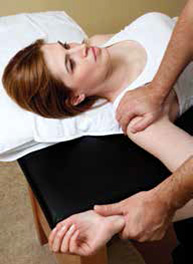
If you have already gone through rotator cuff surgery, the last thing you want to think about is doing it all over again. Unfortunately, many patients do suffer tears of the same tendons that caused them to need surgery in the first place. Most of the time, this is not the surgeon’s fault, nor does it mean that you didn’t follow postoperative directions properly. For example, if you are age 65 or older, your chance of a full recovery is 43%, as opposed to 95% for patients under the age of 55. And research has also suggested that for every centimeter increase in tear size, the risk of failure increases more than two-fold.
If you do experience a re-tear, revision surgery may be a possibility. But surgeons caution that the outcomes are not as favorable as they are with first-time rotator cuff repair. A 2014 study in the Orthopaedic Journal of Sports Medicine found that revisions are twice as likely to re-tear and are more likely to contribute to pain and impaired overhead function. Despite this, rotator cuff revisions still have a 93% patient satisfaction rate. In some cases, the benefits of a revision outweigh the risks; in others, the surgeon may decide it is better to leave the rotator cuff alone.
The good news is that whether you have surgery or not, we can help you increase your range of motion and minimize discomfort through a specially designed physical therapy program. If you do undergo the revision, it is important to know that recovery may take longer than it did for your initial rotator cuff surgery, and rehabilitation is likely going to be handled differently. The focus should be on improving function while respecting your body’s limits.
Similar to the physical therapy you engaged in following your first rotator cuff repair, at six to 12 weeks postsurgery, you will begin passive and assisted stretching exercises four to five times a day so that the muscles heal well. More active exercises include pendulum exercises in which you bend over and move your trunk to thus “swing” the arm of the affected shoulder around in circles, shoulder shrug, ball squeezes and wall walking your arm up and down a wall. Resistance exercises with a rubber band and an overhead pulley will strengthen the muscles.
Together we can work with your surgeon to develop a physical therapy program based on your past surgery and current symptoms, taking it as slowly as needed to ensure safety, comfort and the best possible outcome.


















